“In preparing for battle, I have always found that plans are useless, but planning is indispensable.” Dwight D. Eisenhower was a military officer and statesman. The 34th president of the United States (1953 to 1961.)
Good plans identify probabilities and feasibilities while driving team collaboration/visibility on an array of possible outcomes. In many organizations, a misaligned argument is a focus on precision or speed. Neither should be the goal of planning.
How We Screwed Up Planning
Over the last decade, the organization grew larger and more political in the journey from regional to global supply chain structures. Organizational alignment gaps increased elongating decision latency–time to make a decision– while introducing bias and gaming. Ironically, analytics capabilities increased greatly, while organizational capabilities precipitously declined.
Figure 1. The Need for Collaboration
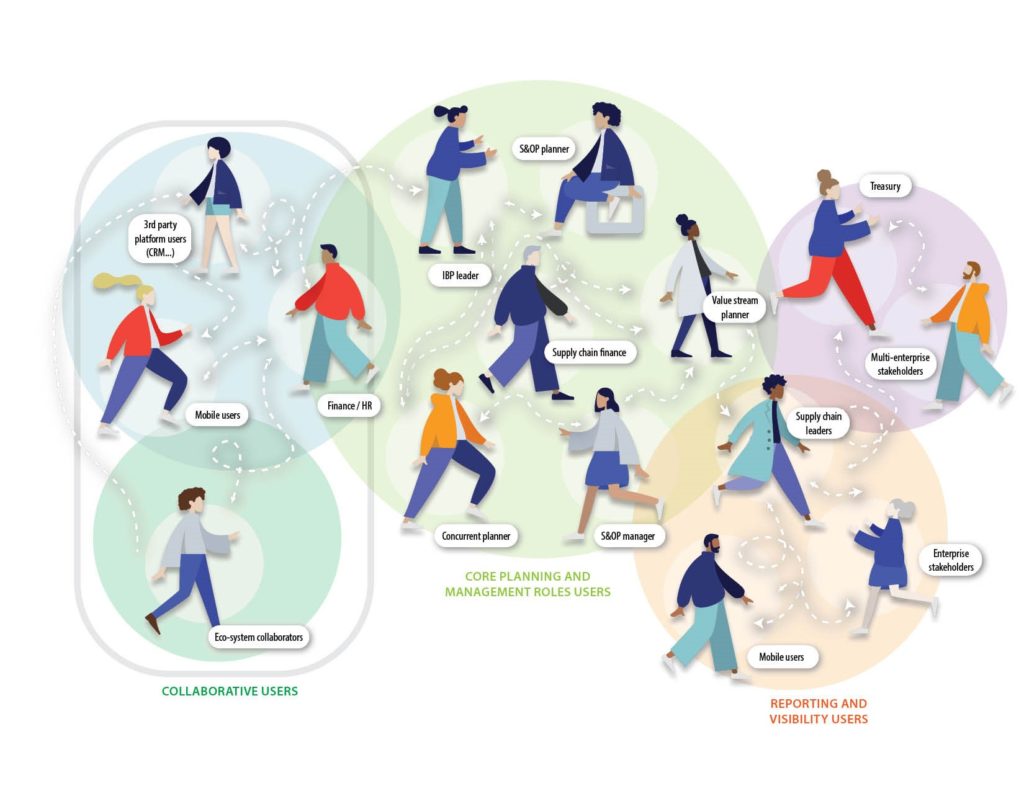
Many groups talk “end-to-end,” but the work happens in silos and pockets that are not aligned. I work with a group that has a sub-team focused on cost, one on customer service, and one on inventory, but lack alignment on a standard definition of supply chain excellence.
As we enter Q2, companies face the lashing with the big black whip. It is the bullwhip impact of higher variability and market change. Expect write-downs, firesales, and rethinking supply chain strategies. In the current state, we will become more reactive. Inside-out processes make us more reactive and insular to market changes. On average, industries carry 38 more days of inventory than in 2007. The problem is that most of it is the wrong inventory due to planning fallacies.
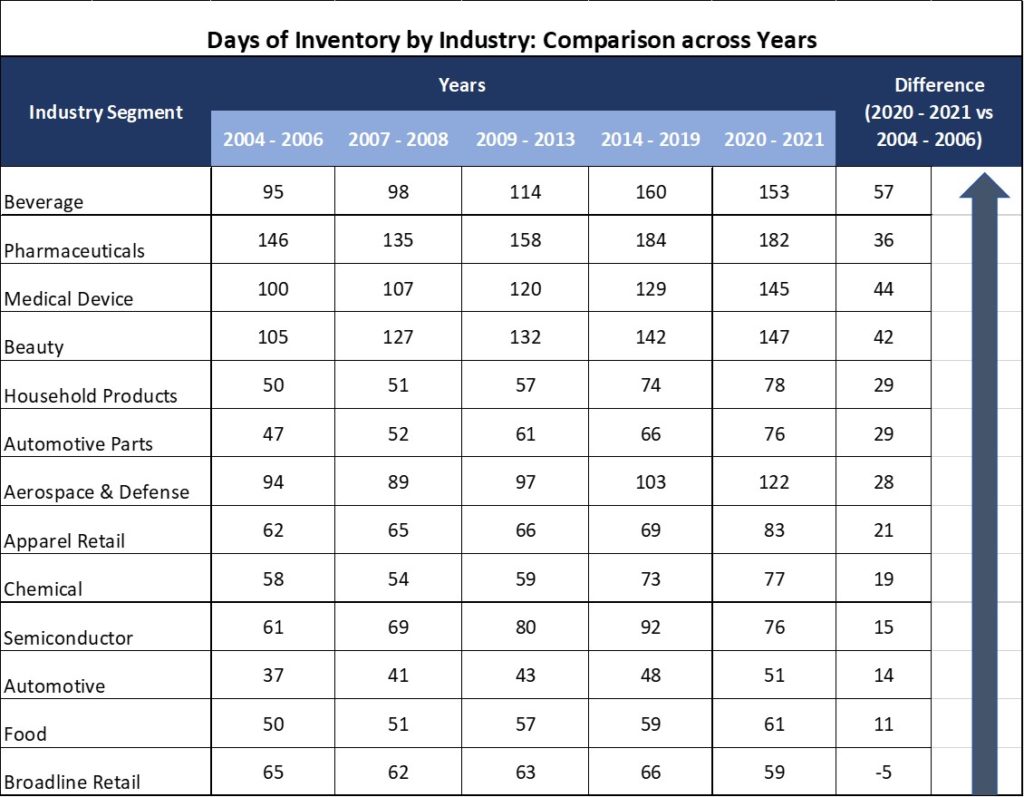
How Do We Change The Discussion?
The first step is to understand that the companies that we hold in high esteem have clay feet. (Clay feet is the idiom to express weakness or character flaw, especially with entities of prominence and power.)
To understand this point, I contrast the results of the Gartner Top 25 Award Winners published in 2022 (last week) against their peer group from 2012 to 2021. The red cells indicate that the company is underperforming against its peer group. (The peer groups are defined in the Supply Chains to Admire methodology.)
As an industry, we are not learning from leaders. Note that the Gartner Top 25 rewards a list where 78% underperform on year-over-year growth, 41% have a price to book value lower than their peer group, 33% underperform in inventory turns, and 30% have a Return on Invested Capital lower than peers. In contrast, 19% have an operating margin less than a comparative company for 2012-2021. Is this leadership? I think not.
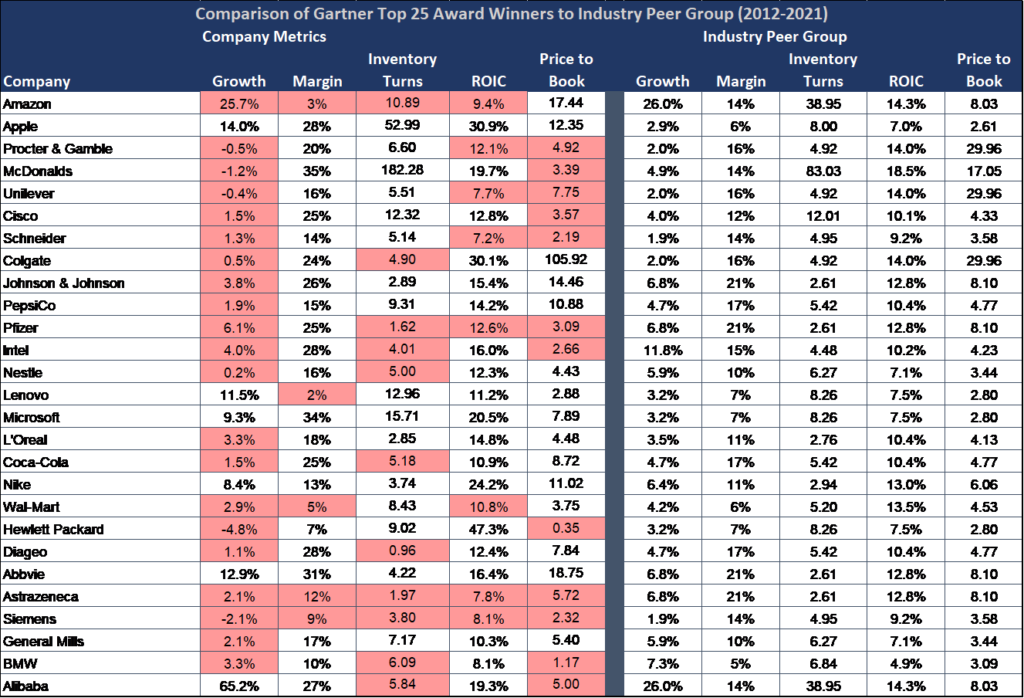
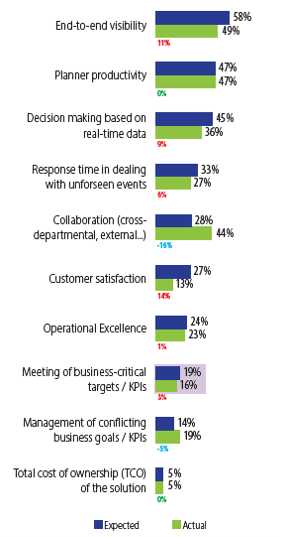
Why do we celebrate this list? The simple answer is convention. The Gartner Top 25 ranking is based on voting by supply chain leaders. Large branded companies work in the industry to share their stories to make the lists. They market their success while building an image of supply chain success.
The industry is rife with event companies that place the speakers on stage to tell their story, but no one asks the question, “Based on results, is this a supply chain leader?” And, the similar question, “Do I want to have results like these by imitating the prevailing thoughts on best practices?” The industry is self-perpetuating and has even moved through downward cycles in the last decade. The process of events-paid sponsorship-to build a technology sales pipeline- is a death knell for progress.
In the development of supply chain planning in the 1990s, the focus was on outcomes. This is no longer the case. Today, the focus is on visibility, planner productivity, and reaction. The concepts of planning, as so well understood by Dwight preparing for battle, are not well-understood.
Note the low expectation of improving organizational collaboration. The alignment of teams to a common mission while having the same line of sight, clarity on definitions, and outcomes is one of the greatest values of planning. Sadly, there is less focus on optimization to drive outcomes. As planning becomes a technology to implement versus a decision support technology to drive outcomes, organizations become more reactive, losing the power of planning. Only 1/3 of companies have “what-if” capabilities, only 9% design push/pull decoupling points to maximize the form and function of inventory, and few have redefined work to improve organizational collaboration.
To make the point, let me tell you a story. A large company on the Gartner list never implemented tactical supply planning. The reason? They believed that there was no Return on Investment (ROI). The organization with deep manufacturing “roots” automated factories and trucks but did not align make, source, and deliver together. As a result, the river of demand becomes dirty and turbulent as demand flows through the organization to procurement. The organization implemented procurement execution systems, but these also operate as an island disconnected to contract manufacturing and their value networks of suppliers.
The organization is awash with market data that is not used in the supply chain, and the river overflows its banks as it passes through a narrow budget review process termed Integrated Business Planning (IBP). In this process, all of the targets are changed to meet the budget. (In practice, this is not workable. All of the planners scurry to their desks the day after IBP to change the system back to market-driven targets to minimize shortages.) Each plan operates on its own island, and procurement and contract manufacturing are isolated. The focus is on IT standardization and better use of Enterprise Resource Planning (ERP) data. The depiction of the organization’s river of demand is below.
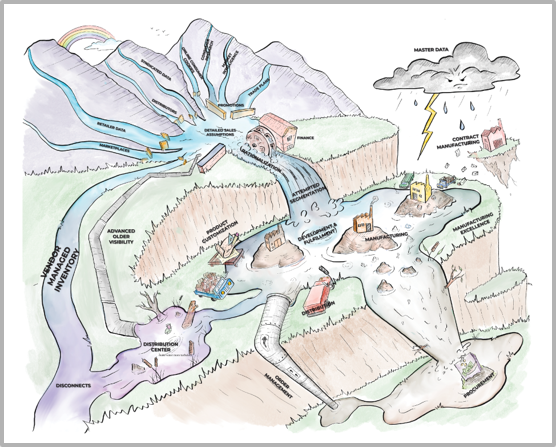
Note how the company talks end-to-end while perpetuating “islands of optimization” while introducing turbulence through gaming, functional root cause analysis, and tight integration to ERP and budget data.
Unlearning
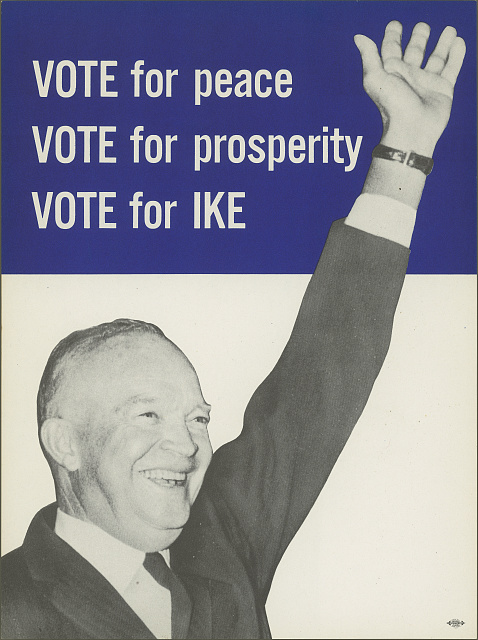
Here, in this blog, I will not try to challenge supply chain leaders to rethink everything. Instead, I will ask companies to reconsider the role of planning. When it comes to planning, this old gal votes for IKE.
Planning is useless but indispensable. Not because of precise and speedy output; but instead because it aligns teams to potential outcomes. The fallacy of tight integration to budget or ERP data and focusing on exact data in an imperfect world is fools play. The need to mandate a fixed ROI for something this essential is short-sighted.
Never in this world has planning been more critical but less understood. Don’t follow the laggards. Learn from the leaders that beat their peer group results. In these companies, the focus is on outcomes and the use of market data. Laggards embrace yesterday’s taxonomies and focus on IT standardization, while leaders focus on the world of supply chain design flows and collaborative outcomes.
In this world of extreme variability, VOTE for Ike.






